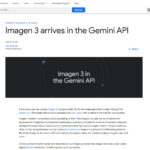With the introduction of a new label for AI-generated images, Google is taking a significant step towards transparency. What does this mean for the future of digital content?
Google’s move to label AI-generated images in the search window, Google Lens and Android’s Circle to Search feature is part of a larger effort to increase user trust. This move comes amid growing concerns about the authenticity of digital content and the spread of deepfakes. In particular, “C2PA metadata” technology is being used as the key to tagging these images – a technology developed by leading companies such as Google, Amazon, Microsoft, OpenAI and Adobe as part of the Coalition for Content Provenance and Authenticity.
The challenge, however, is the limited adoption of C2PA standards in the industry. Many widely used generative AI tools do not yet support this metadata, and the ability to remove or corrupt metadata further tests the effectiveness of the system. Nevertheless, the initiative is an important signal in the current industry-wide discussion about the authenticity and security of digital content.
The focus on combating deepfake threats should not be underestimated. Studies predict that the financial losses caused by deepfake technologies could rise from 12.3 billion dollars to 40 billion dollars by 2027. The drastic figures underline the urgent need for action and the importance of Google’s initiated measures.
In addition, the labeling of AI-generated images could be extended to other platforms such as YouTube in the future. This would represent a comprehensive strategy for securing digital content that goes far beyond traditional search services. This is a development that is being closely monitored by the entire industry and may be seen as a blueprint for further measures.
Summary:
- Google introduces labeling for AI-generated images in search.
- Use of C2PA metadata supported by leading industry players.
- Effectiveness challenged by limited distribution and manipulability of metadata.
- Increase in losses caused by deepfakes as a driving factor.
- Possible extension of tagging to platforms such as YouTube.
Sources: Techcrunch






